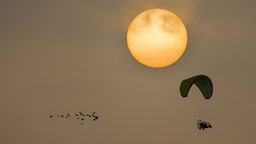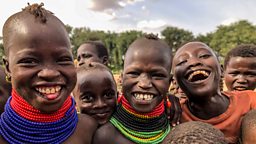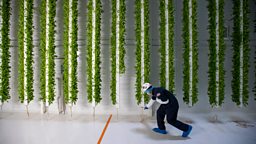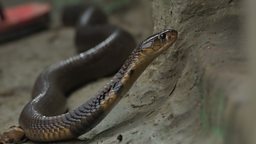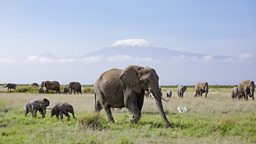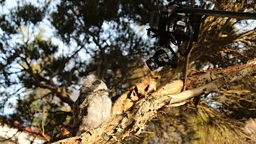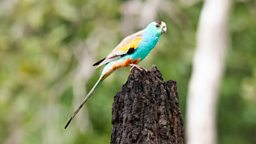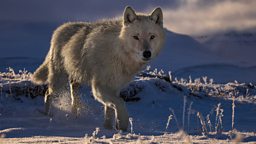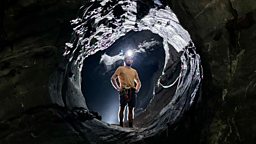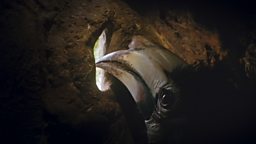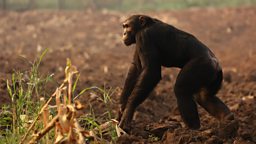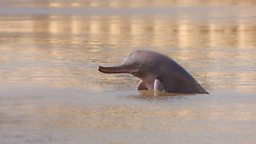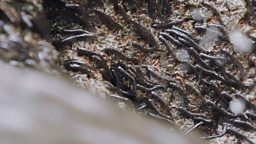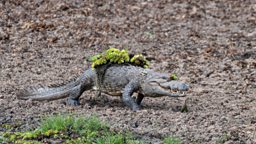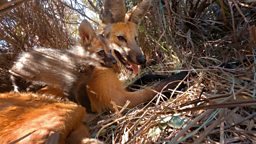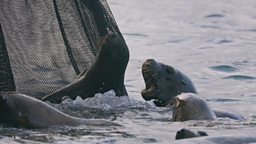Filming the fall of a forest giant
By Alex Walters, assistant producer for Forests
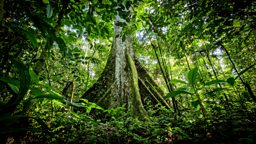
Where would the Forest episode of Planet Earth 3 be without trees? They are the very fabric of the forest and so many forest creatures depend on them. We decided early on that we wanted to tell a story about the importance of trees and what is lost when even just a single tree falls.
what is lost when even just a single tree falls
There are so many incredible species of trees, and I didn’t relish the thought of seeing one cut down, but I set about finding loggers that were doing just that. We decided that we wanted to film a large old-growth tree that has a huge amount of animals and plants depending on it. I spent a long time researching different tree species, looking for this ultimate ‘Tree of Life’ as we called it. I came across stories about the Kapok, also called by its scientific name ‘ceiba pentandra’, which is seen as the grandmother tree in South America. When you see it in real life it’s easy to see why; its colossal presence is just astonishing, wildlife is drawn to it and epiphyte plants festoon its huge branches. It was clear that the kapok was our Tree of Life.
Cinematographers Pete Cayless, Joris van Alphen, Sam Lewis and I set off to the remote Amazonian location, a journey that took three days of travel by air, car, boat and carguero - a type of motorbike with a flatbed on the back, to transport us all and the filming equipment on the final part of our journey through the dense rainforest to the kapok tree.
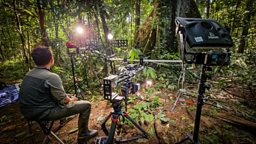
We first wanted to show this ancient tree in all its glory, to get an immersive view, so we used a piece of equipment developed for the series Green Planet called the ‘Triffid’. The Triffid is a field robotics system for filming in real time and timelapse which allowed the camera to travel along the ground and up a buttress root. The results are amazing- you really feel like you are entering the tree’s world. To get into the canopy we used a cable dolly system created by our rope specialist Ollie Laker which he named the Monarch. This enabled us to transport the camera all the way up the kapok’s huge trunk and into the canopy in one seamless shot.

Filming the tree fall took a huge amount of planning; the risks were high to both camera equipment and the crew, and then of course to film a tree falling, you only have one shot at getting it right!
We had a safety briefing with the loggers; we were told which direction the tree would be falling and given a safe area to stand during the operation. Next, we needed to make sure to place the cameras out of the direct line of the fall, but in the perfect position to capture the shot. For this we needed to find out the height of the tree, but how to do that? We used a key piece of camera kit, the drone. Pete flew the drone to the top of the canopy, careful not to get the props too close to the branches. The flight confirmed that the tree was at 60 metres tall.
We carefully set-up 6 ground cameras at different angles near the line of the fall, close enough to intimately capture the fall, but not so close that they would get destroyed. Timing was everything, we needed to start recording on all of the ground cameras and also launch three drones to film aerials without their batteries running out before the event. Add to that the noise of the chainsaw and the pressure was on!
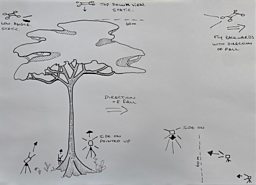
The moment when the tree fell was like nothing I’ve experienced before; the sound of the chainsaw stopped and the loggers ran to safety. What followed was a deafening crack and then a massive crash as the tree hit the ground, its branches shattering, shaking the earth beneath our feet, and then… silence. It was tragically emotional.
a massive crash as the tree hit the ground, its branches shattering, shaking the earth beneath our feet, and then… silence.
We brought the drones down and recovered the ground cameras amongst the wreckage; not a single scratch on any of them! But it wasn’t lost on us how, even though the crew and cameras were safe and we’d got the shots, the life of this 200 year old giant, that had supported so much and could have lived another hundred years, was now over in just a matter of seconds.
If you think about how much life this one tree supported, it is shocking to realise that other ‘mother trees’, just like this Kapok, are being felled at an astonishing rate, 15 billion trees a year, all around the world. We hope this story helps people realise how important it is to preserve trees and restore native forest for the health of wildlife, as well as our own.

